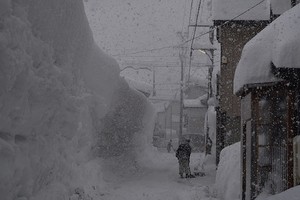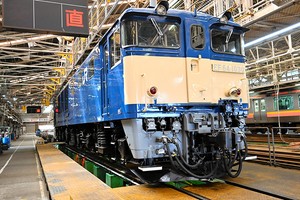THE ASAHI SHIMBUN
July 17, 2024 at 07:00 JST
On a stroll through the posh Ginza district in early June, long lines were spotted outside a number of luxury storefronts.
Outside a particularly popular shop was one with upwards of 20 people—not exactly a rare sight in Tokyo.
What stood out was the blend of languages from different parts of Asia. International tourists had gathered to spend—and save—big.
One visitor from South Korea said she purchased a wallet for 400,000 yen ($2,490).
“It was around 20 percent cheaper than in South Korea,” she said, satisfied.
A Chinese woman waiting in line touted a bag full of her spoils from another designer location. She showed off a pair of shoes that supposedly cost more than 200,000 yen.
“I don't know exactly how affordable this footwear is considered in Japan, but it definitely carries a lower price tag here than in China,” she said.
Unsurprisingly, the weak yen is behind the price gap of goods in Japan and abroad.
Not too long ago, one U.S. dollar equated to around 103 yen in early 2021. In just a few years it has now soared into the upper-150 range and even past 160 yen. The dollar’s value jumped 1.5 times what the yen is worth over this period.
High-end brands are resorting to price hikes to secure profits but have not been fast enough to keep pace with the yen’s rapid depreciation.
Due to this, designer products from non-Japanese brands are increasingly affordable in the eyes of tourists from all over the world.
“Customers from European states are buying goods from labels founded in their own countries in an increasing number of cases as well,” said Yoshio Murata, president of department store chain Takashimaya Co., during an interview with The Asahi Shimbun in April.
“Overseas brands have raised their prices repeatedly, making it much more difficult for Japanese patrons to purchase their items,” Murata said.
A similar trend is evident with Apple Inc.’s iPhone from the United States.
Data from survey firm MM Research Institute Ltd. shows that the standard model with the smallest storage capacity of each new iteration of the iPhone sold for $829 after tax at stores in the United States.
This consistent rate spans the iPhone 12, released in 2020, to the iPhone 15, which came out in 2023.
However, that was not the case for Japan.
Apple has increased prices every year, from 94,380 yen for the iPhone 12 to 124,800 yen for the iPhone 15.

Sources say this reflects the yen’s plunging value, with a strong consensus among Japanese consumers that the phone is no longer affordable.
However, what is considered expensive for domestic residents has become a bargain for others.
In a comparison between 38 countries and regions, the iPhone 15 prices were converted to yen based on the exchange rate when the model was released.
It turns out that buying it in Japan is still the second-cheapest option, just behind China.
The phone’s average price among those countries and regions except for Japan came out at 153,518 yen, and it can go for as much as 30,000 yen more outside Japan. Small wonder that international tourists flock to Apple stores during their trips to Japan.
TWO SIDES OF THE SAME COIN
While visitors benefit from the price differences, the weak yen has placed a growing burden on domestic households.
Consumers in Japan are struggling with the rising prices of foodstuffs and other imports.
What does the lowest yen value in 38 years mean for residents, companies and the country? Is it a blessing or a curse?
Depending on who you are, a bit of both.
One Japanese company particularly at the mercy of the exchange rate is Step Ahead, a nationwide thrift store chain.
Ninety percent of its merchandise is shipped from the United States and the strengthened dollar has led to markups.
T-shirt and jeans prices at the Harajuku No. 2 branch of Step Ahead are now up to 30 percent higher compared to two years ago. Those timeless Levi's 501 jeans from North America used to be in the range between 6,000 yen and 7,000 yen, but are now in the range between 8,000 yen and 9,000 yen.

The major reason for the adjustment is likewise the feeble yen. Step Ahead runs 16 branches nationwide and its operating company addressed increased procurement costs by bumping up product prices to stock the stores.
Even so, Masahiro Nagaoka, president of Step Ahead’s operating company, acknowledges this tactic’s limitations.
“Raising prices further (as the yen continuously weakens) will make it impossible for our patrons to afford our items,” he said. “We have no choice but to cut earnings to avoid reviewing rates again.”
A college junior perusing the store is one patron who has seen firsthand how dramatically the cost of even secondhand clothing has shot up over the last few years.
“I cannot suddenly earn more (from part-time work) so further increased prices would cause me to buy fewer clothes,” said the 21-year-old from neighboring Saitama Prefecture.
PROLONGED DEPRECIATION
The contrast between international visitors’ circumstances and that of domestic consumers is similarly reflected in the gross domestic product.
Personal spending in Japan is sluggish. Excluding the effects of fluctuating commodity prices, the real GDP declined for four consecutive quarters through to the end of this year’s January-March period.
This set the worst record in over a decade since the collapse of U.S. financial giant Lehman Brothers in 2008.
The price hikes tied to the sinking yen have led to households spending less on products and services, among other factors.
In the meantime, tourist spending—an export, in a sense—has risen steadily since COVID-19 restrictions were relaxed, jumping 11.6 percent in the first quarter from the previous one.
Japanese export companies are also enjoying their highest profits ever.
These diverging realities are not only caused by the current weak yen. Its sustained fall is also a factor.
As the real effective exchange rate represents a currency’s purchasing power after factoring differences between nations, the last several years have not been kind to the yen.
Its real effective exchange rate was 69.99 in April this year versus 100 in 2020—an all-time low since records began in 1970.
The statistics suggest that the proportion of domestic commodity prices to yen-based foreign counterparts decreased to less than 40 percent of what it was when it peaked at 193.97 in April 1995.
The constantly weakening yen during that period was combined with prolonged deflation in Japan, among other elements, while wages and commodity prices were continually inflated elsewhere in the world.
When asked what should be done to counter Japan’s low wages and goods prices, Tsuyoshi Ueno, a senior economist at NLI Research Institute, pointed out that corporations should stop restraining their capital spending.
“Companies need to beef up investments in equipment, information technology and education to boost their productivity,” said Ueno.
He argued that profits gained via this process must go to employees.
“What is important is to realize and make salary increases standard to make up for commodity price hikes,” he said.
He reasons that doing this to strengthen what he considers the nation’s fundamental economic muscle will make it easier for the Bank of Japan to raise interest rates, thereby helping correct the yen’s downward course.
(This article was written by Shiki Iwasawa and Asako Myoraku.)




















A peek through the music industry’s curtain at the producers who harnessed social media to help their idols go global.
A series based on diplomatic documents declassified by Japan’s Foreign Ministry
Here is a collection of first-hand accounts by “hibakusha” atomic bomb survivors.
Cooking experts, chefs and others involved in the field of food introduce their special recipes intertwined with their paths in life.
A series about Japanese-Americans and their memories of World War II